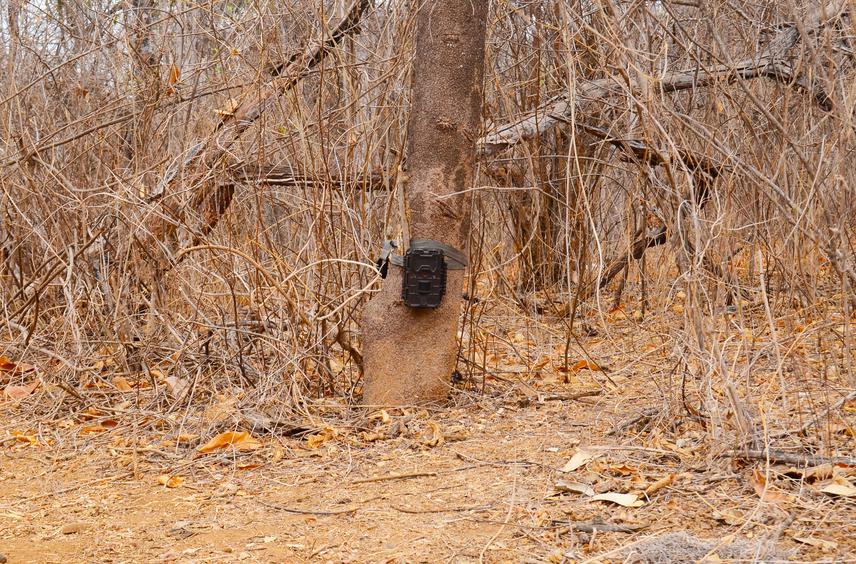Alvaro García Olaechea
Other projects
3 Oct 2016
Interpretation Centre and Wildlife Conservation in the Noroeste Biosphere Reserve, Peru
With this project we aim to evaluate the influence of exotic species (i.e. livestock, goats, dogs, and cats) on the relative abundance and activity patterns of native mammals in the buffer zone and within the Cerros de Amotape National Park, in the dry forest of northwestern Peru. Additionally, we will understand the perception of local people towards wildlife and create awareness about the importance of wildlife and ecosystem services. To develop these three main objectives, we will use camera traps, track-plates, and conduct semi-structured interviews and environmental education workshops.

Camera trap.
The main threats that wildlife is facing are habitat loss and fragmentation, hunting, and the presence of exotic species. Of these threats, the presence of exotics species is the less studied and its negative impacts are increasing. Exotic species affect native species by competition, predation, and disease transition. To date, exotic species have caused the extinction and increase the extinction risk of at least 738 vertebrate species around the world. Globally, feral cats have contributed to the extinction of 14% of mammals, birds, and reptiles in islands; and dogs have contributed with the extinction of 11 vertebrate species.
In South America, the knowledge about the influence of exotic mammals on native mammals is still poor, with only some research conducted in Ecuador, Chile and Brazil. In those countries, researchers showed that feral and free-ranging dogs negatively influence the distribution, habitat use, occupancy, and activity patterns of native mammals in different ecosystems. In Peru the influence of exotic mammals (livestock and pets) on native mammals have never been assed; despite the potential negative impacts on native species and its known presence within and outside protected areas. Generally, towns located in buffer zones of protected areas experience human-wildlife conflicts that are poorly known and managed.
Thus, we will study the influence of exotic mammals (i.e cattle, goats, dogs and cats) on the abundance and activity patterns of medium to large-sized mammals in the buffer zone and within the Cerros de Amotape National Parka, a protected area that conserves the critically endangered dry forest of north-western Peru. With this project, we will identify the more vulnerable species affected by exotic mammals and be able to propose mitigation activities to control exotic species’ populations and reduce their interaction with native species. Also, through environmental education activities we will raise awareness about responsible ownership of exotic species. Finally, we will identify and quantify people’s perception toward wildlife and obtain evidence for human-wildlife conflicts occurring in our study area. Based on these results, our next steps would be to target specific conflicts and vulnerable species.